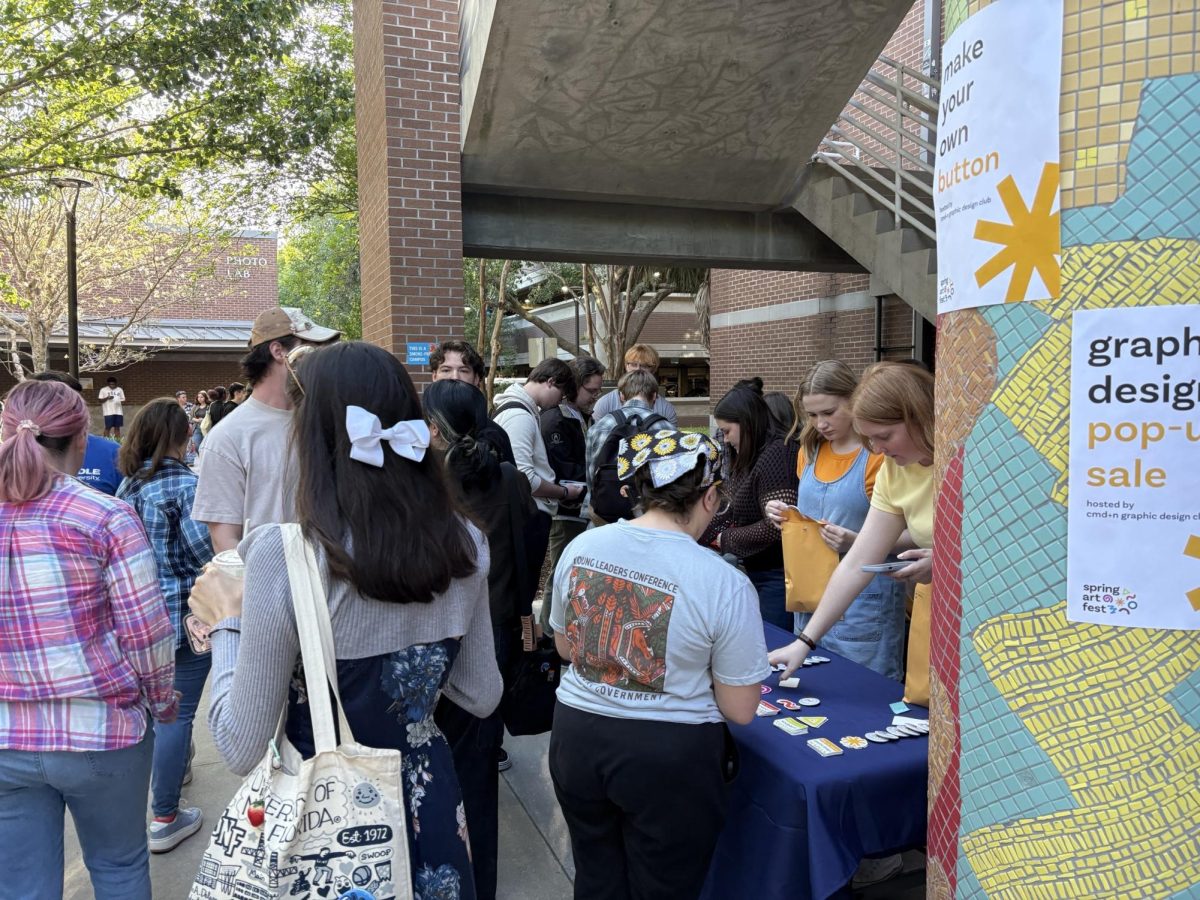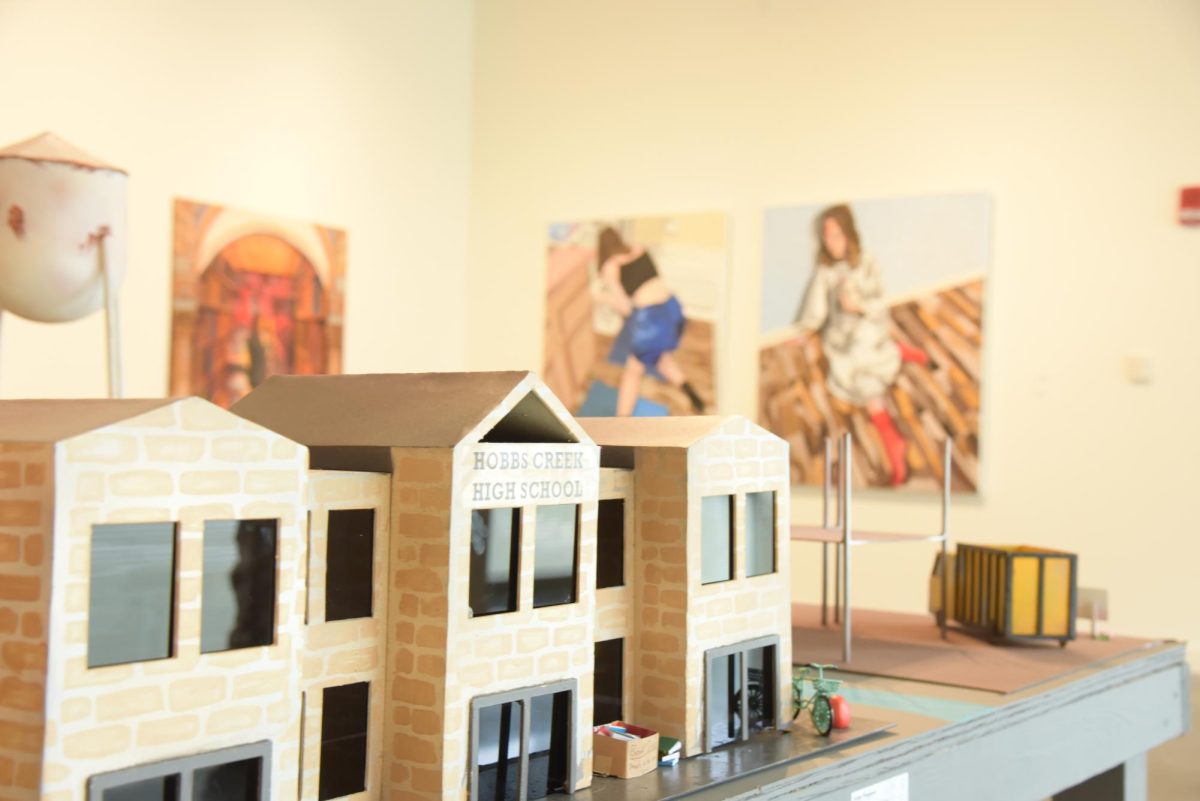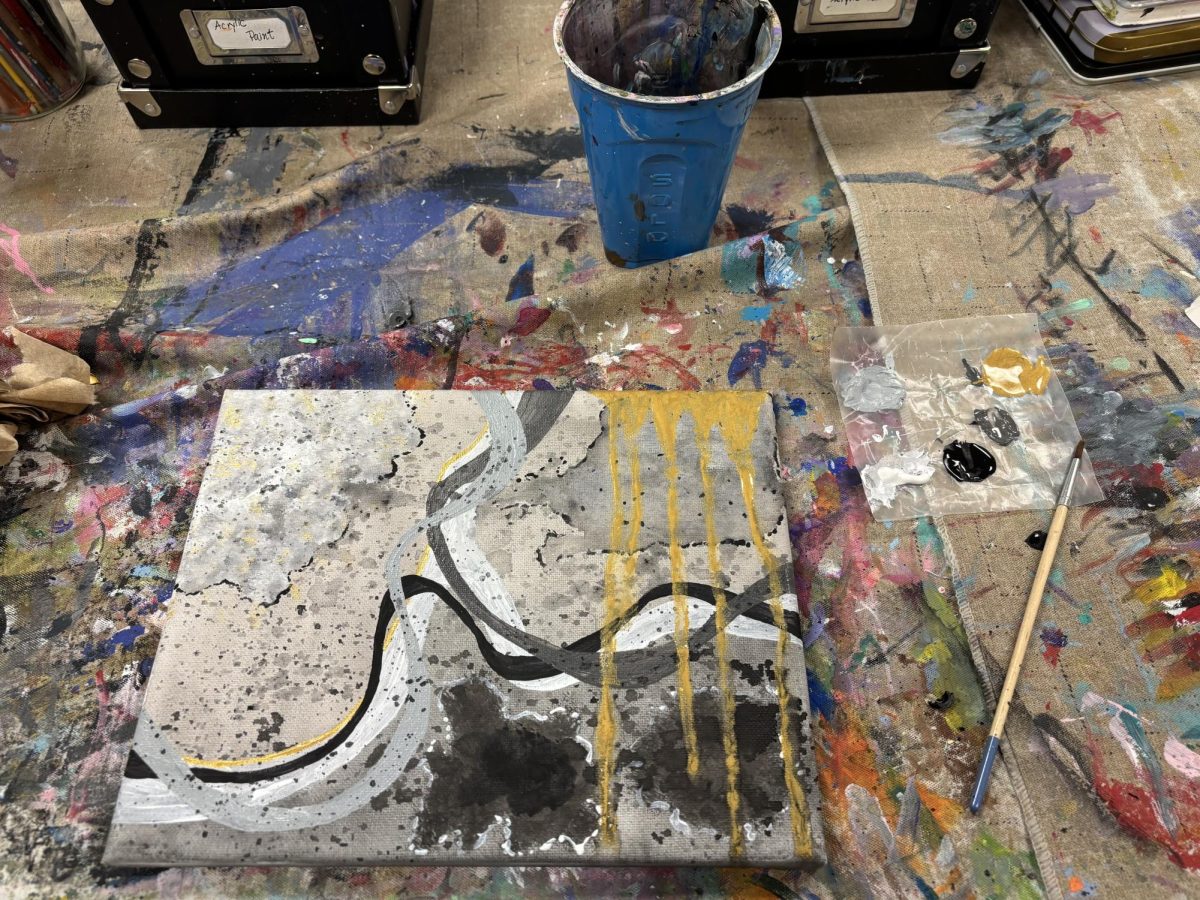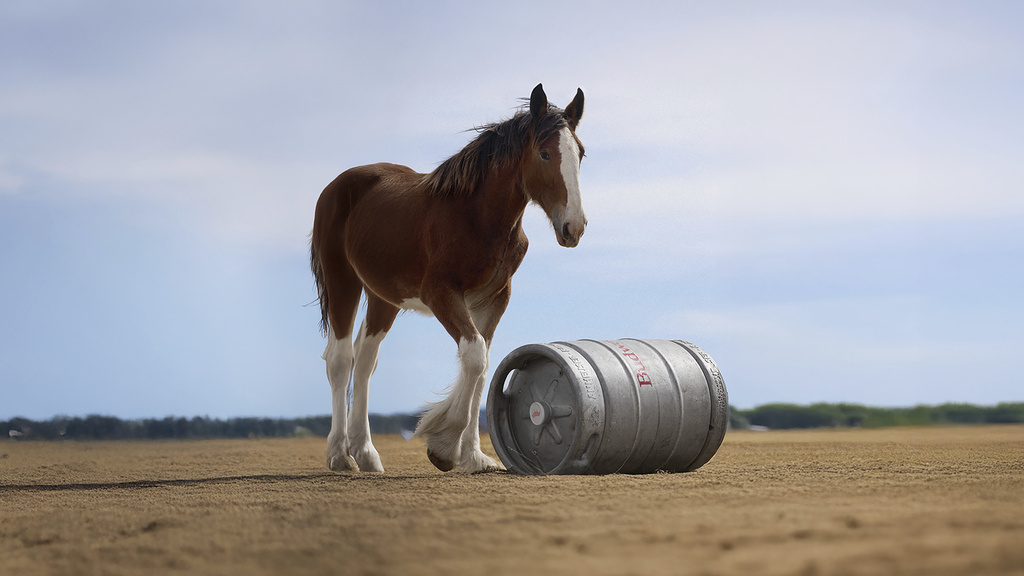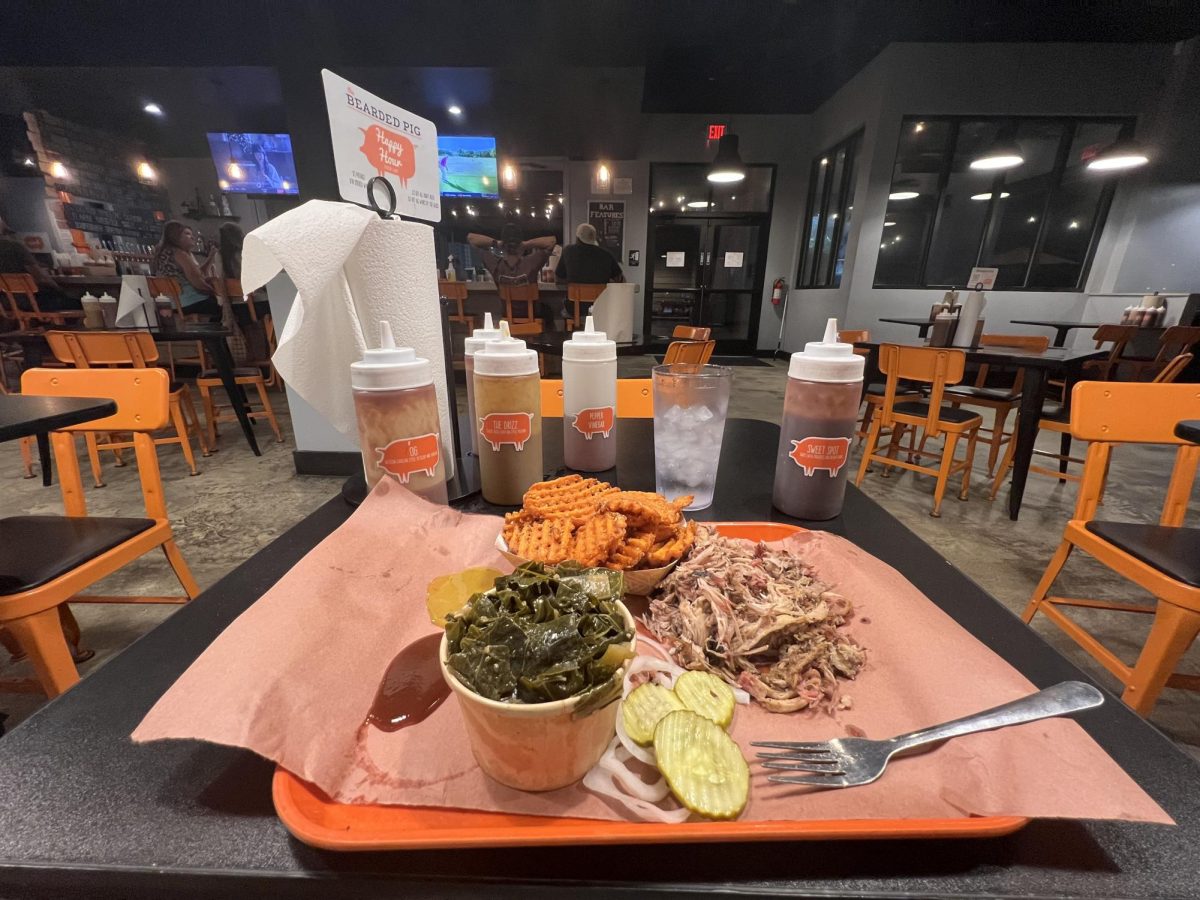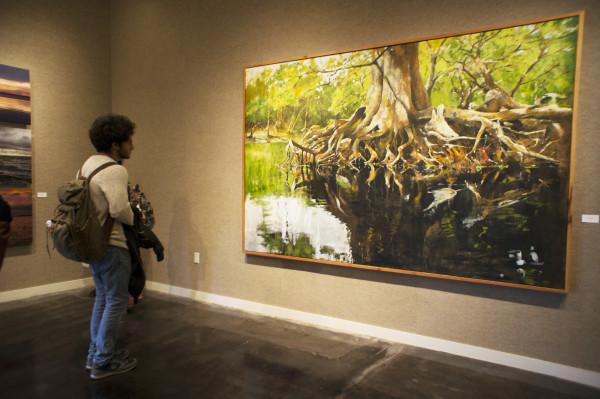
“In silence
A river speaks
Through artists
Who sit by her shore and listen
Or paddle quiet into her heart”
-Jim Draper
In their kayak, the world quiets down. They breathe easier, deeper than anywhere else. The cool water beneath rocks the vessel gently, and they freely turn their minds to art.
On Tuesday night, the Lufrano Intercultural Gallery welcomed another exhibition onto its walls, with artwork by Allison Watson, Paul Ladnier, Doug Eng, and Coordinator of UNF Art Galleries Jim Draper.
Matching the Lufrano gallery’s lasting theme of human condition and natural entities, A River Speaks seeks to explore the river that flows through life, and that most only view from atop a bridge.
Kamele “Oupa” Seane, director of the Intercultural Center for PEACE, experienced the flow of these southern rivers, from the St. John’s to the Ichetucknee, through the paintings and photographs at the exhibition.
“Through [the artists’] work the river speaks to me,” Seane said. “It says ‘Look at these beautiful, beautiful, beautiful rivers we have’, what can we do in order to preserve this pristine, this beauty, this part of nature?”
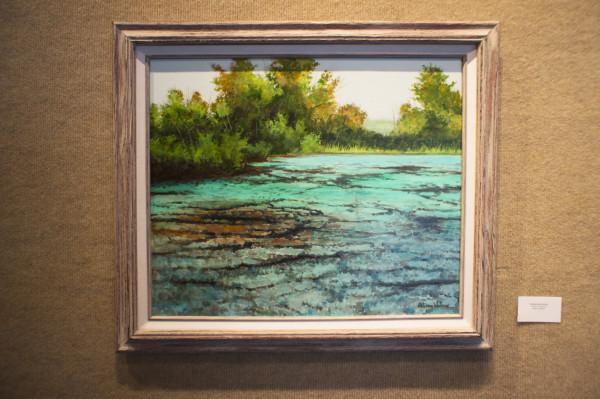
Draper, who is also a professor at UNF, said the purpose of this exhibition was for artists to be able to give a voice to these majestic bodies of water.
“I didn’t want it to be about me,” Draper said. “I only had one painting in it, even though it happens to be a very large painting, I wanted it to talk about artists in general. So it’s not so much about individual artists, but this things that artists do, which is speak for a river.”
Since 2015 was the Year of the River amongst the art community, these three artists combined their work to encompass different rivers across the region and convey their stories. With Watson’s artwork from the Suwanee and Ichetucknee Rivers, Ladnier’s work from the Nassau River, and Eng’s work from the St. John’s River, the artists hope that their work brings life to each river the viewers experience afterward.
As someone who visits his favorite black-water spots year after year, Draper can’t help but notice a constant in these places is change.
“I think the thing that, as an artist observing what’s going on, there are places I’ve been going to for 20 years on specific bodies of water,” Draper said. “And the interesting thing about it, as an artist not knowing anything about anything else, necessarily: nothing is ever as good as like every time you go back. It’s all diminished. And I think that’s because of the artists observing particular places, and just because we’re trained to observe not knowing anything other than the aesthetic quality of the place—we absorb what we see, and I see that it’s diminished.”
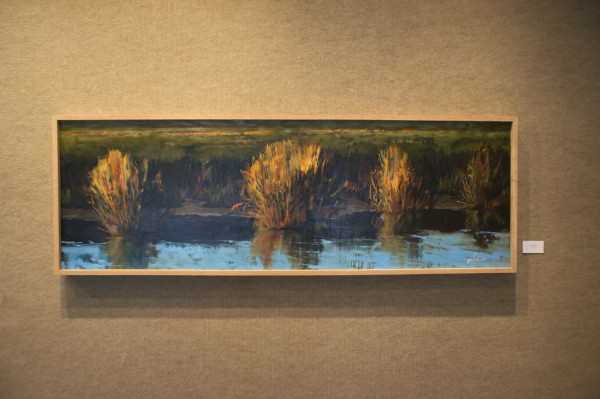
For Draper, the erosion, pollution and overuse of the rivers’ resources was a trigger to create and combine these works. Draper mentioned he revisited a site he painted 15 years ago, only to see it dirty and lackluster. However, there is always a bright side to visiting these natural beauties for the artists in the long run.
“On the other hand, there is still this regal beauty,” Draper said. “This noble beauty, and you develop this kind of relationship. When Allison and I go kayaking, we have these things, like you get in your boat and you push off from shore and you settle into the water, and you immediately do this sigh. You immediately just breathe in and breathe out. And you immediately become part of that thing that’s floating, and you kind of give yourself up to these things you’re floating in.”
The elements that live in these rivers: beauty, depletion, awe, all combine to create Draper’s only piece, “Cypress at Turner Bridge”, which he says is one of his best paintings he’s ever done.
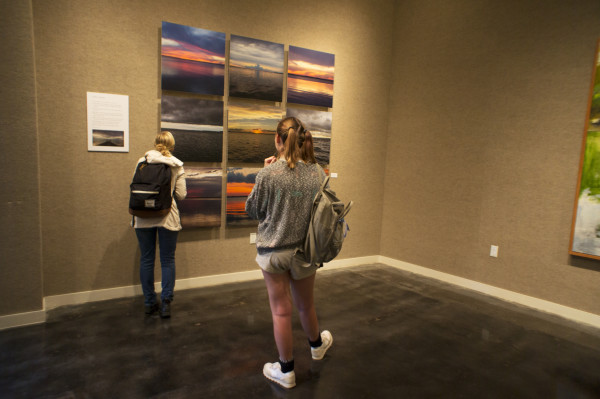
Emotions that these artists receive from the natural environment flow not only through them, but through Seane as well.
“It’s just amazing how through his paintings, he will bring it right in your face,” Seane said. “Because look at that huge piece, the way he captures the roots–you feel like almost being right there in the river with him.”
As the Earth changes and morphs over time, creating beauty and destroying it, inspiring and discouraging, Draper hopes the audience of this exhibition can see through the bad contained in these rivers.
“I hope that from this exhibition people get an understanding of that these waterways are more than a resource,” Draper said. “They’re more than just this thing to be used, that they do have an ecology, that they do have a life, they’re dependent on being treated well, they do have certain rights to exist, and they’re not just a thing to be used. I think that’s probably what I want people to understand is that rivers are more than what you see from a bridge.”
The exhibition A River Speaks will be residing in the Lufrano gallery until Mar. 11, and prices for the artwork range from $150 to $24,000.
—
For more information, news tips, or if you see an error in this story, contact features@unfspinnaker.com.




